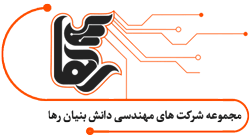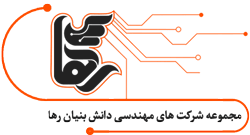What is monitoring?
Monitoring means controlling and observing performance. It can be said that the most important decision-making factor for the future is the past statistics, so managers need statistics to make the best decisions. It is the same in the field of IT, that is most strategic decisions are based on information and statistics obtained from the performance records of network elements. Monitoring is not only used in network.
Why should monitoring be used?
According to the definition provided, this is efficiency in any field. For example, in the world’s big industries, monitoring the human and industrial sector helps a lot in the positive process of the company’s activity. In this way, by carefully monitoring the performance of each department, it is possible to find the weak points and fix them.
It is also possible to find the strong points and make the most of it by investing in that part, as a point of support and a feature different from other companies. So far, we have mentioned the reason why big companies invest in this field and value it. Since the leap of technology in the world, many specialists have worked on the development of monitoring. It can be imagined that before the introduction of monitoring technology in the companies, a lot of time was spent to find the best solution when there were problems.
Preparing a complete and comprehensive report
If we expand this idea on the scale of very large industries such as: automotive and aviation industries, then we will find that monitoring has provided a great service to the rapid growth of technology in the present era. The good news is that in the field of IT, it is possible to have a complete and comprehensive report on almost every part of the network including (computers, services, servers, switching and routing equipment, etc.).
How monitoring works
The way monitoring works is that it collects information from different parts in a centralized database and informs the controlling operators in different ways, including charts, tables, text, etc. This leads to less down time in case of problems. One of the factors driving the companies towards this solution is this blackouts reduction.
If the total number of Down Time seconds of the companies is calculated in one year (including human resources costs, drop in sales, lagging behind competitors, etc.), surely all industries will set up a monitoring section at a much lower cost.
The most widely used monitoring software
The most widely used and popular monitoring systems in the world, which have a very high-quality compared to other systems, are as follows:
- SolarWinds
- PRTG
- ZABBIX
- OP Manager
In this list, PRTG and ZABBIX systems are ahead of the other two examples by a great difference. The power of these two software is not hidden even on people who have worked with them in a very basic way. or even seen their program closely. The difference in the power and performance of these two softwares with other monitoring softwares is their widespread usage . (numerous consumers). These two softwares at many levels, including the infrastructure level are seen in control centers (NOC).
RSMS (Raha Smart Monitoring Solution)
Raha intelligent monitoring system is developed based on ZABBIX, which has a superb and functional environment. which can be exemplary compared to any other monitoring software. This environment is so practical and user-friendly that any person who works in the IT field and is familiar with the nature of monitoring, can interact with this system marvelously.
One of the features of this software is that it avoids difficult and highly specialized terms, unlike low-level software. And it is continuously updated to be more developed according to the needs of Iranian companies. In the following, we will get to know some of the features of this system in a specialized way.
last word
The magnitude of monitoring is not given in the written form, this claim is confirmed by dear customers who participated in the presentation meetings in person. And they got to know the countless capabilities of this smart system, all of which are gathered in a user-friendly and practical consul. And this is not the whole story, it is very important that this system is configured by Raha specialists so that it can reach the maximum efficiency.
The belief of Raha information technology experts is that the monitoring system in networks is like the power of vision. that neither the blind nor the sighted know their value, but a sighted person who has lost his sight understands the value of vision, so it is strongly recommended to experience the vision with RSMS smart monitoring system!




